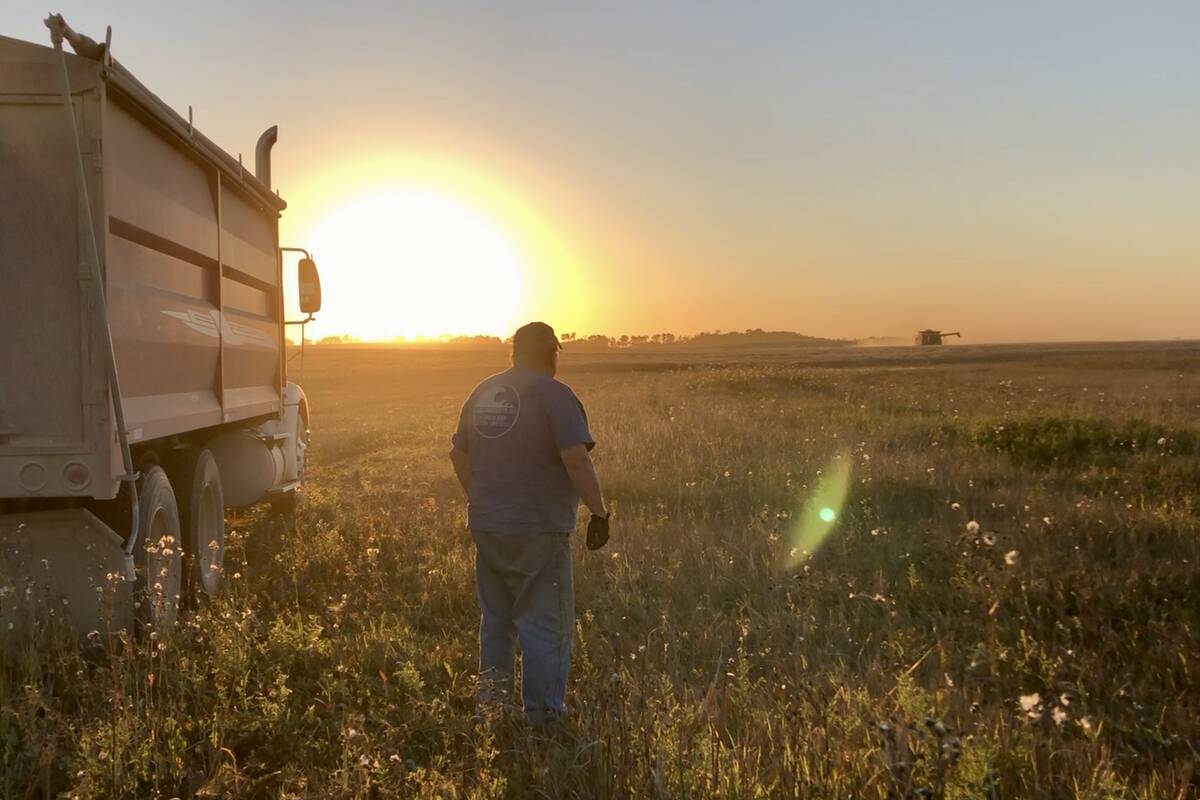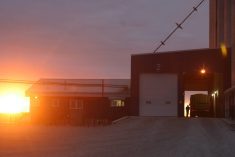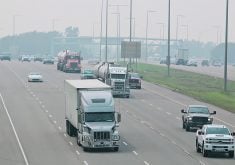CANORA, Sask. Ñ It’s impossible to know what Joseph Ortynsky was thinking in 1907 when he arrived at his heavily wooded, 160 acre homestead near Verigin, a small community in east-central Saskatchewan.
His move to the area, along with a brother and a brother-in-law, is not well documented and few details of his journey from Winnipeg are available.
Ortynsky had much in common with thousands of other European settlers who were arriving in Western Canada at the end of the 19th century.
After leaving his home in western Ukraine, he hoped to acquire some farmland, raise a family and build a new life in Canada’s prairie frontier.
Read Also

VIDEO: Bittersweet harvest for this family farmhand
Bruce Burnett helps his brother harvest wheat and canola for the last time on the family farm in Manitoba where they both grew up.
“When he arrived in Winnipeg (from Ukraine), Dad said all they had was 10 cents left out of a borrowed dollar,” said Paul Ortynsky, Joseph’s eldest son.
“His first crop wasn’t much to start out with. Just a little bit more than a garden but (he) cleared a bit more land each year and eventually bought more land and some machinery and became one of the bigger farmers in the area.”
Joseph Ortynsky left Europe at the beginning of the 20th century, at a time when Ottawa was eagerly seeking newcomers to settle the vast and sparsely populated Prairies.
After leaving his homeland in Galicia, Ortynsky travelled to Liverpool, England, with his mother and father, Maria and Pawlo Ortynsky, and four siblings.
The family spent three weeks crossing the Atlantic on a voyage marked by hunger, sickness and hurricane winds.
When they arrived in Canada, they boarded a train for Winnipeg where Joseph’s father found work as a labourer. The family took up residence in the Elmwood area in Winnipeg’s northeast.
Joseph, then in his early teens, also found odd jobs in Winnipeg, working as a labourer at a local brick factory and later as a railway builder.
At the time, the Canadian National Railway was expanding its network of branch lines into the area north of Yorkton, Sask., and Joseph had been told that fertile, unbroken farmland was available near Verigin, a predominantly Doukhobor community about 50 kilometres north of Yorkton.
In 1907, with modest wealth and ample ambition, Joseph left the family home along with his brother Mike and brother-in-law Ignace Yurkowski.
For $30, the three used their savings to buy three quarter sections of land. By the autumn of 1907, they had built log homes on two quarter sections and a sod hut on the third.
By 1910, Joseph had broken 54 acres of land on his home quarter and had acquired three horses, a cow, two young cattle, some machinery and a granary.
Two years later, he married 16-year-old Mary Chocholik, the daughter of another immigrant family. Together, the young couple raised a family of seven children including three sons Ñ Paul, Nestor and Peter Ñ and four daughters Ñ Nellie, Bernice, Zoria and Stepanie.
The histories of Saskatchewan and Alberta are filled with personal stories similar to the Ortynskys.
Between 1900 and 1915, waves of immigrants began flooding into the Canadian West, making an indelible mark on the newly inaugurated provinces.
In the late 1800s for example, Canada’s population of roughly 5.5 million included more than three million people of British origin and 1.7 million of French descent. Together, the two largest ethnic groups represented about 57 and 31 percent of Canada’s total population respectively.
But by 1900, under the policies of interior minister Clifford Sifton, immigrants from continental Europe and the United States began arriving in unprecedented numbers.
Between 1895 and 1905, Sifton encouraged the recruitment of American settlers who were already established south of the border, a plan that met some resistance from British subjects but one that resulted in nearly 750,000 people migrating north from the U.S.
American settlers, who often arrived with machinery, livestock and farming experience, became the largest group of immigrants to arrive in Saskatchewan and Alberta when the provinces were created in 1905.
The recruitment of Eastern Europeans also resulted in the arrival of more than 500,000 people between 1900 and 1915. The large majority of those were Ukrainians or Doukhobors who faced economic and political persecution at home.
Upon arrival, the eastern Europeans settled a large swath of the Prairies that ran north and west from Manitoba, through central Saskatchewan and toward Edmonton along a route that corresponds with the Yellowhead Highway.
Today, nearly 100 years after Joseph Ortynsky’s arrival, little is left of Verigin, Sask., but the Ortynsky homestead is still intact and the family’s name is recognized throughout the area.
Joseph’s three sons, Paul, Nestor and Peter Ortynsky, all settled in nearby Canora, Sask., as did one of his daughters, Bernice.
Over the past eight decades, the four children have raised their own families in the area, established successful businesses and contributed to the character of the community and the province.
Now in his 80s, Nestor Ortynsky has fond memories of his childhood near Verigin.
He remembers helping with chores on the farm, snaring gophers for a penny bounty and attending school in a one-room schoolhouse where students were forbidden from speaking Ukrainian or Russian, the languages most commonly spoken at home.
“The teachers forbade us from speaking Ukrainian,” Nestor said with a chuckle.
“I didn’t know a word of English when I started school. In fact, it was quite common that the students, when they entered school, didn’t know any English at all.
“I suppose some of them might have known a few words but not enough to converse with.”
Nestor also recalled how his father and other Ukrainian settlers pooled their time and resources to build the Holy Trinity Ukrainian Orthodox Church and community hall at Mazeppa, not far from Verigin.
The construction of the church, in 1927, was an important milestone for Ukrainian settlers who placed great value on the ability to congregate and worship freely in their new homeland.
The church and hall still stand on their original site, about 20 km southeast of Canora.
Today, Nestor owns Canora Central Motors, an automotive and machinery dealership established more than 50 years ago with help from his father.
The dealership is one of five in the Ortynsky family. The other four, started by Nestor and his sons, Evan and Taras, are in Yorkton and Winnipeg.
“A lot has changed but Canora is still a fairly vibrant town,” said Nestor.
“As for my father’s arrival, I don’t remember too much because I wasn’t born yet, but I do remember him talking about clearing the bush and breaking up the land.
“They were getting land that was completely covered in bush so there was probably a lot of work involved but I imagine they were just happy to get 160 acres of land and a lot of bush as well because that bush provided them with fuel.
“I guess a lot has changed since then,” he said. “I don’t think it was an easy life but it was a chance to get some land and get started.”

















